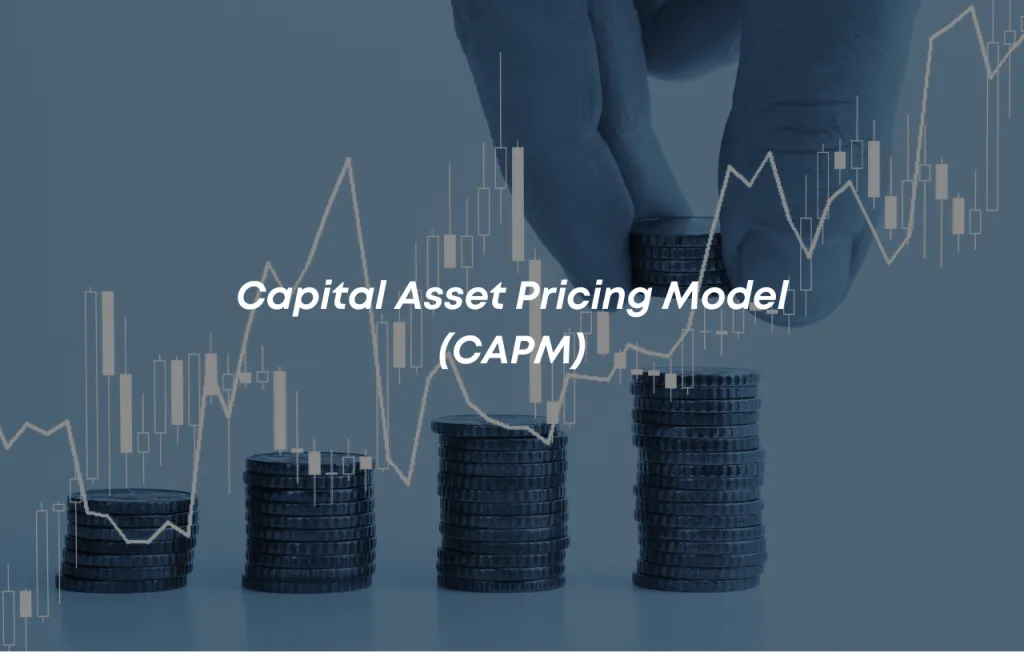Capital Asset Pricing Model (CAPM) – Everything you need to know

The Capital Asset Pricing Model (CAPM) is a widely used tool for evaluating the performance of investments. It is a mathematical model that estimates the expected return of an investment relative to its risk. In this article, we will explain the CAPM and its components in detail.
What is the Capital Asset Pricing Model?
The capital asset pricing model, or CAPM, is a finance-specific model that calculates the relationship between expected dividends and the risk of investing in specific equity. The CAPM model is used to forecast a security’s expected returns. This is comparable to risk-free returns plus the addition of a beta.
To properly evaluate the capital asset pricing model, both systematic and unsystematic risk must be understood.
Systematic risks are all general dangers associated with any type of investment. Many risks, such as inflation, wars, and recessions, are possible. These are only a few instances of systematic risk.
Unsystematic risks, on the other hand, are specific risks associated with investing in specific stocks or equity. Unsystematic risks, on the other hand, are not regarded as threats and are widely accepted by the market.
CAPM focuses on systematic risks in securities and can thus forecast whether or not a particular investment will fail.
Formula for CAPM
CAPM formula : Ra = Rf + Beta (Rm-Rf)
The following are the various components of this equation:
- Ra = expected dividend on investment
- Rf = Risk-free rate
- Beta = The transaction’s underlying transaction
- Rm-Rf = Current Market Risk Premium
The entire formula considers the potential returns that an investor could receive due to their risk-taking abilities and longer investment time. The beta factor is regarded as a risk in conjunction with current market conditions. If the investment risk is greater than the current conditions, the beta value will be less than one. In this equation, a beta value will always equal one. Finally, if the risk exceeds the market norm, the formula’s ‘Be’ value will be greater than 1.
Advantages and Disadvantages of CAPM for investors
Advantages
- Assumption that your portfolio is diverse : This model is based on the assumption that an investor has a diverse investment portfolio that can mitigate specific or unsystematic risk.
- Simple and convenient : The simplicity of the model is its foundation. These calculations are accurate, allowing investors to make well-informed decisions when selecting equities.
- Systemic risks can significantly alter this calculation : The beta factor in capital asset pricing models takes into account all systematic risks associated with an investment. The dividend discount model (or DDM), another popular return prediction model, ignores the effects of these risks on returns. Because market risk is unpredictable and unpredictable, investors cannot fully mitigate it.

Disadvantages
- Risk-free rates tend to fluctuate frequently : Short-term government securities generate the risk-free premium, or rate used in CAPM calculations. This model has a significant flaw: the risk-free rate can fluctuate in a matter of days.
- A risk-free rate is unattainable : Individual investors cannot borrow or lend at the same interest rates as the government. For calculations, it is impossible to assume a zero-risk rate of return. This implies that the true return on investment may be lower than what the CAPM model predicts.
- It can be difficult to calculate a beta : This return calculation model requires investors to compute a beta value that reflects the security in question. Calculating an accurate beta value can be difficult and time-consuming. Most of the time, a proxy value for beta is used. This not only speeds up but also reduces the accuracy of return calculations. A capital asset pricing model has similar issues to other scientific models. It does, however, provide an accurate picture of the dividends that investors can expect if they put their money at risk.
Example CAPM
This example shows that the investor is willing to invest Rs. 455. Annual returns on these investments are expected to be around 9%. The beta factor in this case is 0.8. The risk-free rate is set at 5%. The investor expects the market to increase in value by about 8% over the next year.
- Ra = 9% + 0.8% x (8%-5%)
- Ra = 11.4%
Role of Beta in CAPM
CAPM includes beta. It compares the volatility of a specific security to the volatility of the stock market as a whole. Consider how the value of a share increases and decreases in lockstep with the stock market. The beta factor would be one in this case.
If a stock’s beta is 1.2, it means that if the market rises 10%, stock prices will rise 12%. A stock with a negative beta (for example, 0.7) indicates that stock prices will rise by 7% when the market as a whole rises by 10%.
When calculating how much compensation an investor will receive for taking on additional risk, the risk premium must be added.
Follow us on Instagram.









